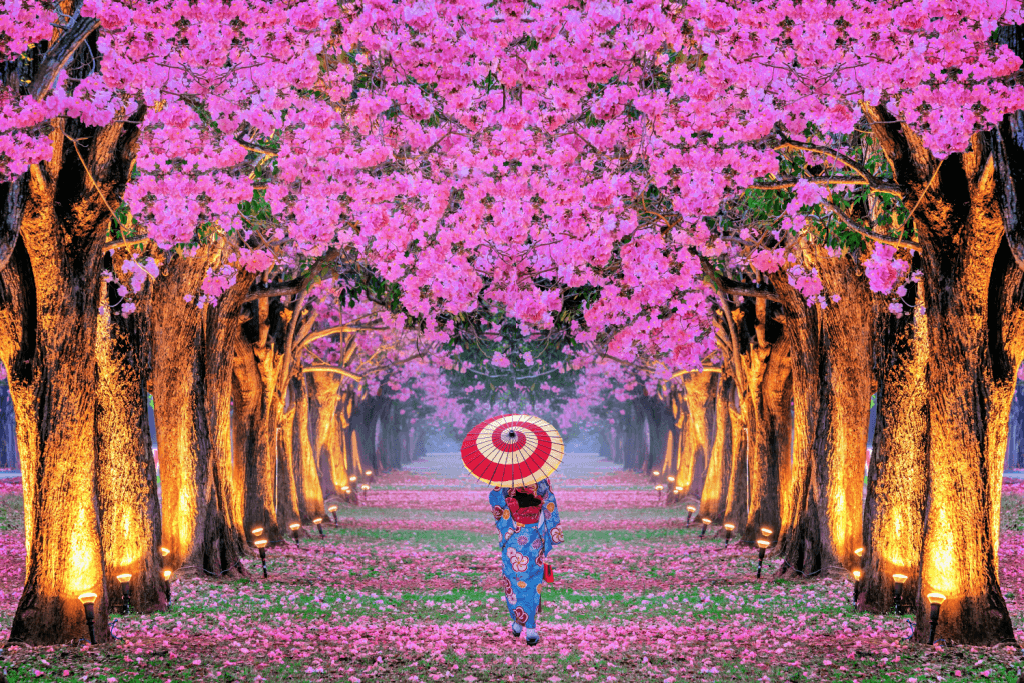In Japan, spring is an excellent time full of cultural traditions, beautiful scenery, and tasty foods. The soft pink petals of the sakura tree blossom have been the subject of many poems, stories, paintings, and other works of art.
Castles and cherry blossom trees in Kumamoto make a beautiful setting for hanami parties. In addition, Japanese ceramics are great for drinking tea under the sakura trees. Let’s look more closely at what the blossoming of the sakura tree means in Japan.
Table of Contents
ToggleSakura Tree Blossom Poetry and Literature
Cherry blossoms have been a favorite writing topic in Japan for centuries. They are often used to talk about things like beauty, change, and how short life is. “The Tale of Genji,” written by Murasaki Shikibu in the 11th century, is one of the most famous pieces of Japanese literature that features cherry blossoms.
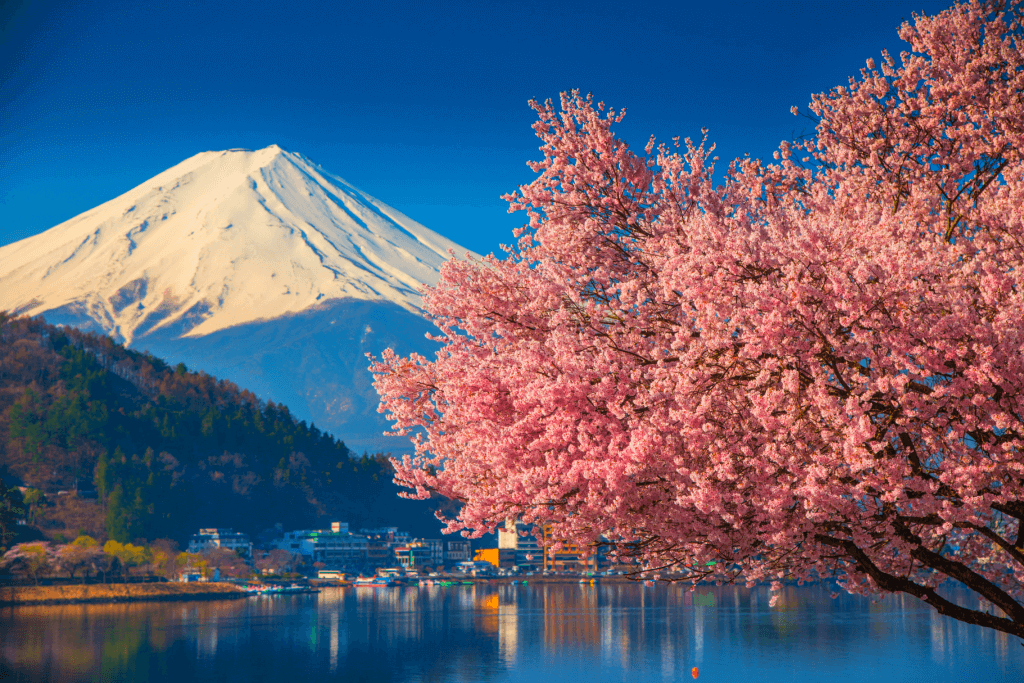
These flowers are still a source of inspiration for writers today. For example, Yu Miri uses cherry blossoms in her book “Tokyo Ueno Station” to talk about life, death, and the challenges of the working class. These beautiful flowers are typical motifs in traditional Japanese poetry, like haikus by Matsuo Basho and Yosa Buson. Cherry blossoms are still a powerful way for Japanese literature and art to discuss life’s beauty and fleeting nature.
Spring in Kumamoto and the Sakura Tree Blossom
Spring in Kumamoto is a beautiful and magical time. The beautiful Kumamoto Castle and the cherry blossoms around it create a unique experience. More than 800 cherry blossom trees are on the castle grounds. Some of them are rare, like the double-flowered weeping cherry. People can enjoy walking through the castle grounds and looking at the flowers. The castle also shows how Japan has changed over time.

In addition to the castle, Kumamoto has many parks and other places to visit that are great for springtime. Suizenji Jojuen Garden is a beautiful landscape garden with over 500 cherry blossom trees and a big pond. There are also traditional teahouses in the garden. Several parks and promenades along the river have great views of the area’s cherry blooms and mountains.
Kumamoto has a lot of natural beauty in the spring, but the city also has a lot of events and fairs. The Sakura Festival at Kumamoto Castle is one of the most famous. It has food stands, live music, and traditional Japanese shows. Visitors can also go to the Kumamoto Castle Samurai Parade, where people dress in traditional samurai outfits and march through the city.
Are you looking for even more wonderful traditional food this spring? Check out Sakuraco! Sakuraco delivers traditional Japanese snacks, teas, sweets, and snacks from local Japanese makers directly to your door so you can enjoy the latest sweets directly from Japan!
Ceramics in Japan
A cherry blossom tea party goes well with the Japanese custom of making ceramics. Each part of Japan has its style and way of making things, which makes pottery an essential part of Japanese culture.
In Arita, which is in Saga Prefecture, they make beautiful porcelain tea cups and bowls with patterns of cherry blossoms and other natural things. Seto, in Aichi Prefecture, makes pottery with unique glazes. The colors are often soft pastels that go well with the colors of cherry blossoms.
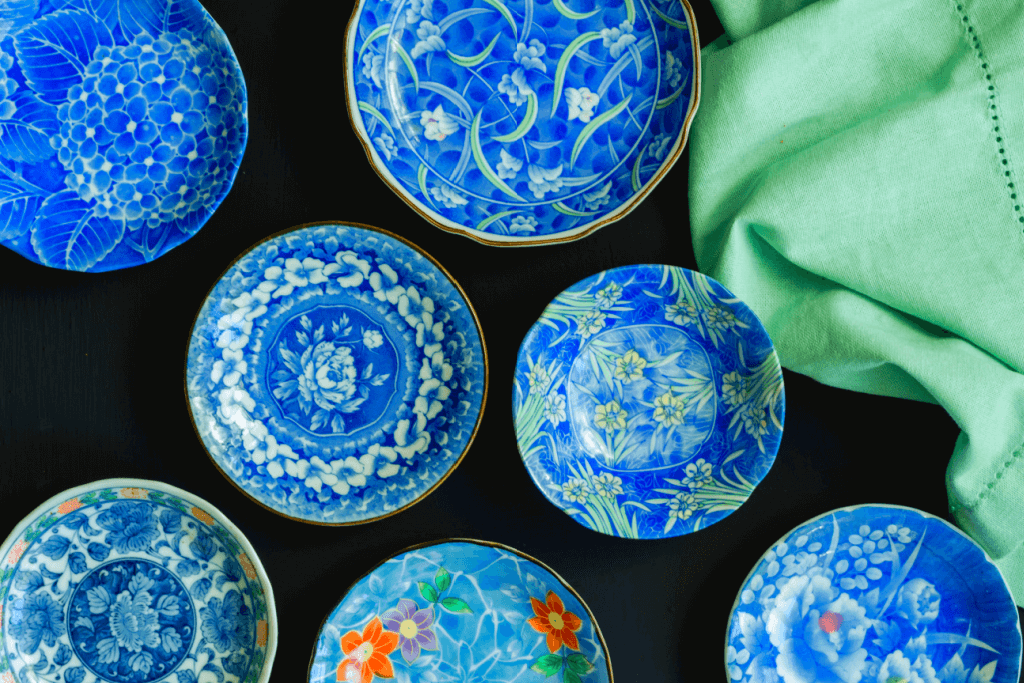
Mashiko, in Tochigi Prefecture, makes rustic pottery with a more natural and earthy feel, while Kyoto makes beautiful, simple pottery. Japanese porcelain is essential to any tea party because they are beautiful and valuable.
There are many different kinds, so there is something for every taste and style. Whether they are delicate porcelain tea sets or rough pottery cups, the charm and grace of Japanese ceramics will add to any springtime tea party.
Shiso (Perilla Leaf)
Shiso, also called perilla leaf, is an herb used often in Japanese cooking. It has a refreshing, slightly minty taste that goes well with fish foods, sushi, and pickles. It’s one of the essential ingredients to make sakura mochi, a traditional Japanese sweet especially famous during the sakura tree blossom season.
Sakura mochi is a sweet, sticky rice cake with a sweet bean paste filling wrapped in a pickled cherry blossom leaf. However, similar mochi usually has a shiso wrapping. As a result, the shiso gives it a unique taste and smell.
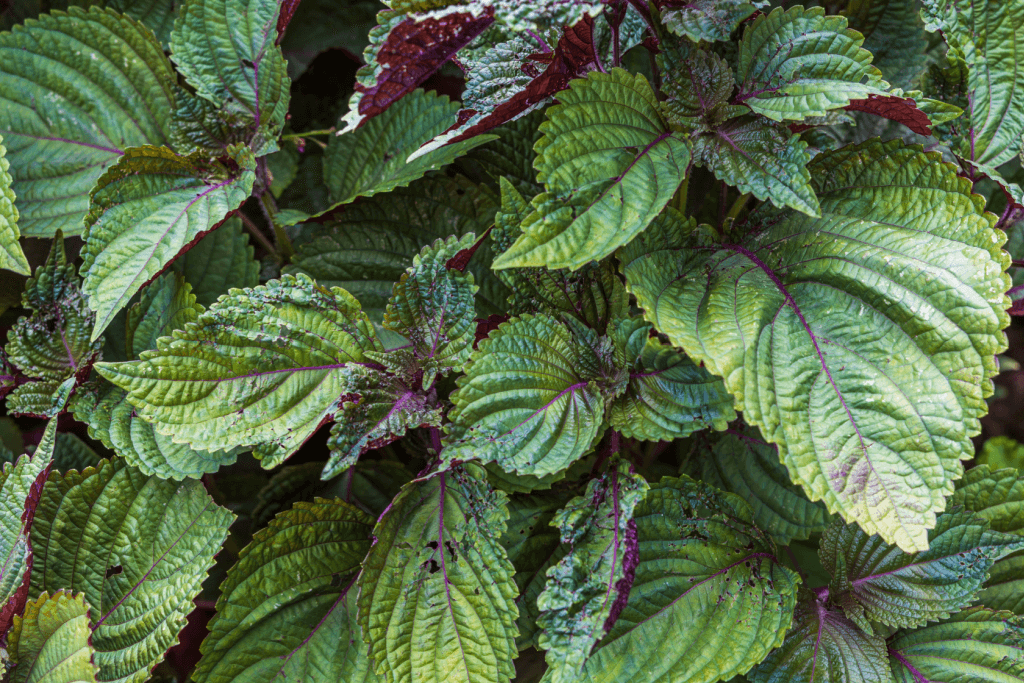
This multipurpose herb is used to add taste but has many health benefits. It’s full of antioxidants, vitamins, and minerals, and traditional medicine uses it to treat stomach problems and make eating easier. Shiso leaves can also treat coughs and colds naturally.
There are two kinds of shiso: green and purple. The green variety is often used in cooking, while the purple version is often used as a decoration and has a slightly more robust flavor. Its many uses and unique flavor make it an essential part of Japanese food, especially in the spring when cherry mochi is very popular.
Namagashi: Traditional Japanese Soft Chews
Namagashi is a Japanese sweet with a long history and is often present at tea events. The forms, sizes, and flavors of these sweets are all different, but they all have one thing in common: a soft texture. Unlike hard candies from the West, namagashi uses rice flour and sweet bean paste. These ingredients give the candy a chewy, delicious, and satisfying texture.
The soft chew, or mizu yokan, is a famous namagashi. Its ingredients include agar-agar, sweet bean paste, and sugar. Green tea or cherry blossoms are often added to mizu yokan to give it a very Japanese taste.
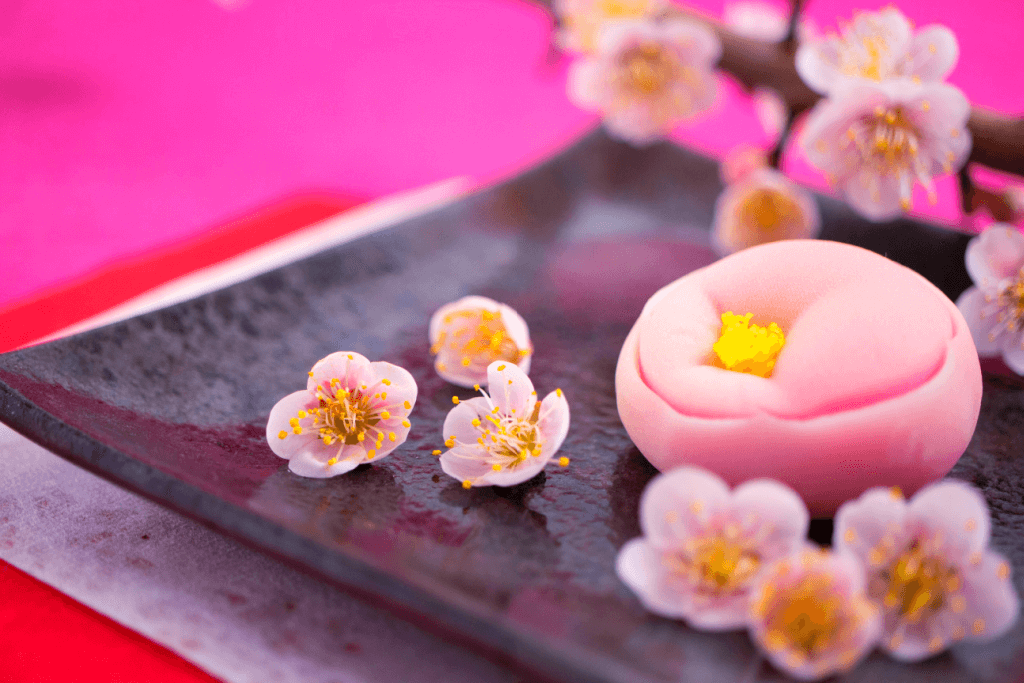
The history of namagashi in Japan returns to Heian time (794–1185). Traditionally, these sweets were exclusive to aristocrats and royalty. Their delicate shapes and flavors used things found in nature as their primary inspiration. People of all ages enjoy namagashi today, a staple of Japanese food.
If you want to know what namagashi tastes and how it feels, try some of the soft chews available in Japan. It’s the perfect treat for anyone with a sweet tooth, whether you like the basic taste of sweet bean paste or something a little more adventurous like matcha or sakura.
Salty Sakura: How do you pickle cherry blossoms?
Choosing a suitable sakura variety is an essential step in the pickling process. Japan’s two most commonly used varieties for pickling cherry blossoms are Somei Yoshino and Yamazakura. Somei Yoshino is recognized for its pale pink petals and graceful appearance, making it the preferred choice for many pickling enthusiasts. Its subtle flavor adds a gentle floral note to the pickled sakura, enhancing the overall experience.
On the other hand, Yamazakura has a darker hue and a richer flavor, appealing to those who appreciate more robust tastes. This variety brings a more potent flavor profile to the pickling process.
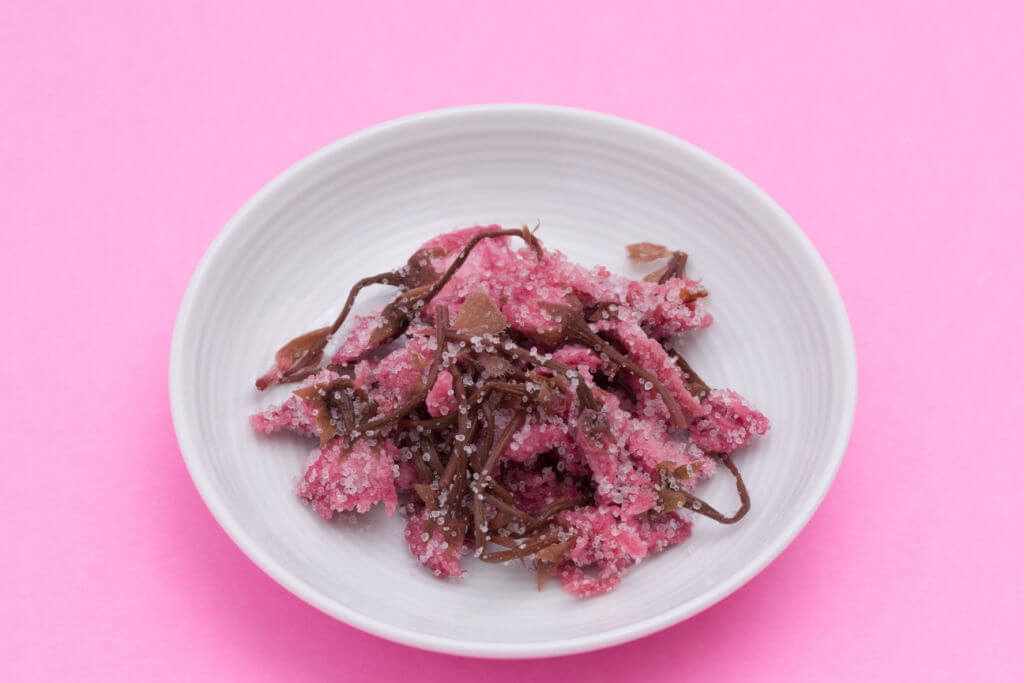
The choice between Somei Yoshino and Yamazakura depends on personal preference and desired flavor profiles. Somei Yoshino’s gentle and elegant traits blend well with various culinary creations. Its subtle sweetness and floral essence make it a versatile ingredient that complements sweet, salty, and savory dishes.
In contrast, Yamazakura’s deeper flavor profile adds a floral note to the pickled sakura, which can be more enjoyable in specific recipes. The darker color of Yamazakura blossoms also adds an eye-catching appeal when used as a topping or ingredient in various dishes.
Whether you choose the delicate allure of Somei Yoshino or the bold flavor of Yamazakura, both varieties offer a delightful addition to the pickling process. Each brings unique characteristics to culinary endeavors, allowing you to create enticing and flavorful dishes with pickled sakura.
What does the arrival of sakura mean in Japan?
Spring in Japan is a beautiful time with many cultural things to do. From poems and stories about cherry blossoms to breathtaking views in Kumamoto, Japan is a great place to see the beauty of spring.
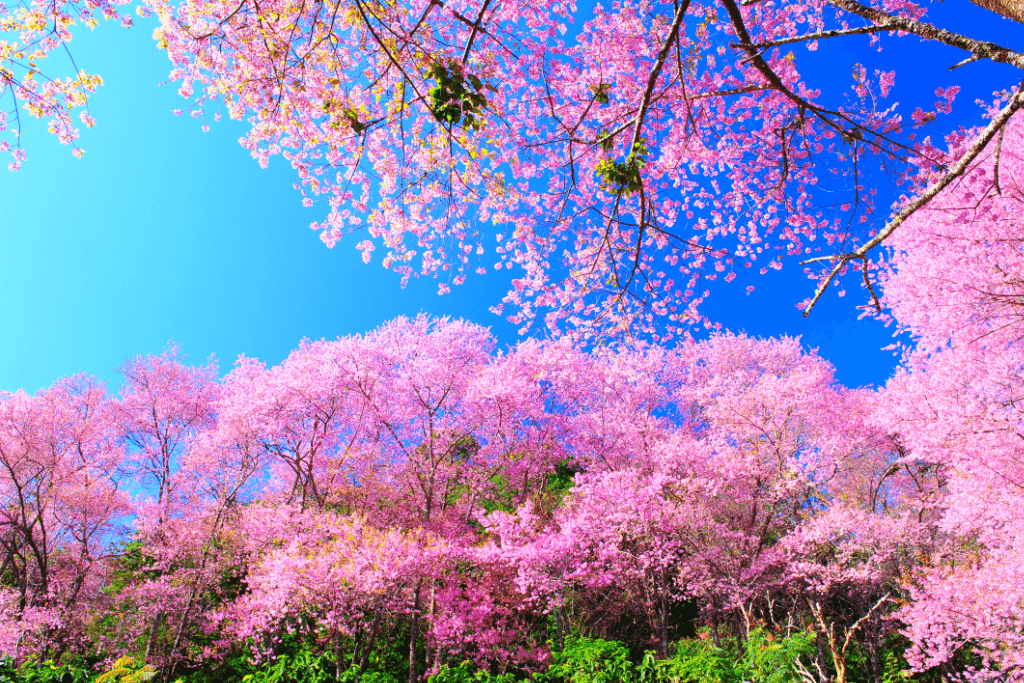
In addition, Japanese pottery has unique designs that go well with the soft colors of cherry blossoms. The herb shiso gives springtime foods like sakura mochi a unique taste. And those who like sweets will love how namagashi tastes like traditional Japanese soft candy.
Overall, spring in Japan is a great time to visit because there are many cultural things to do and see. This time of year, there’s something for everyone to enjoy, whether you want to take in the scenery or learn about Japanese customs. Did you get a chance to enjoy the sakura tree blossom this year? Let us know in the comments below!


